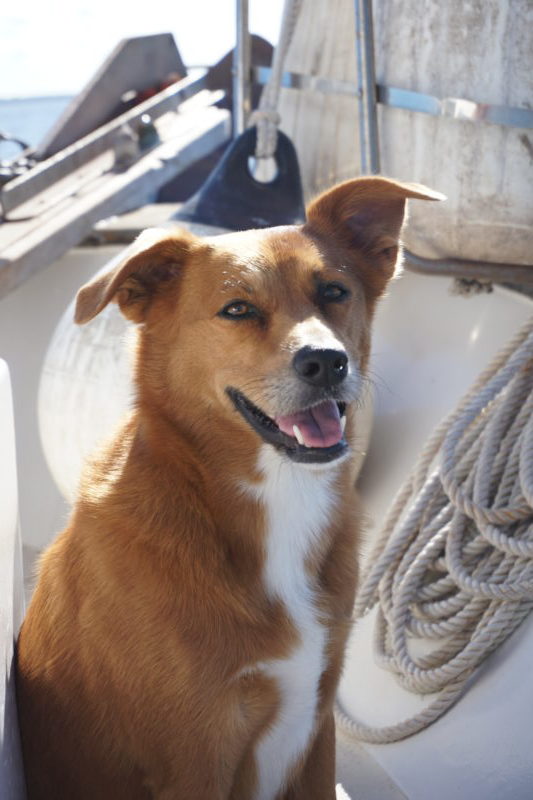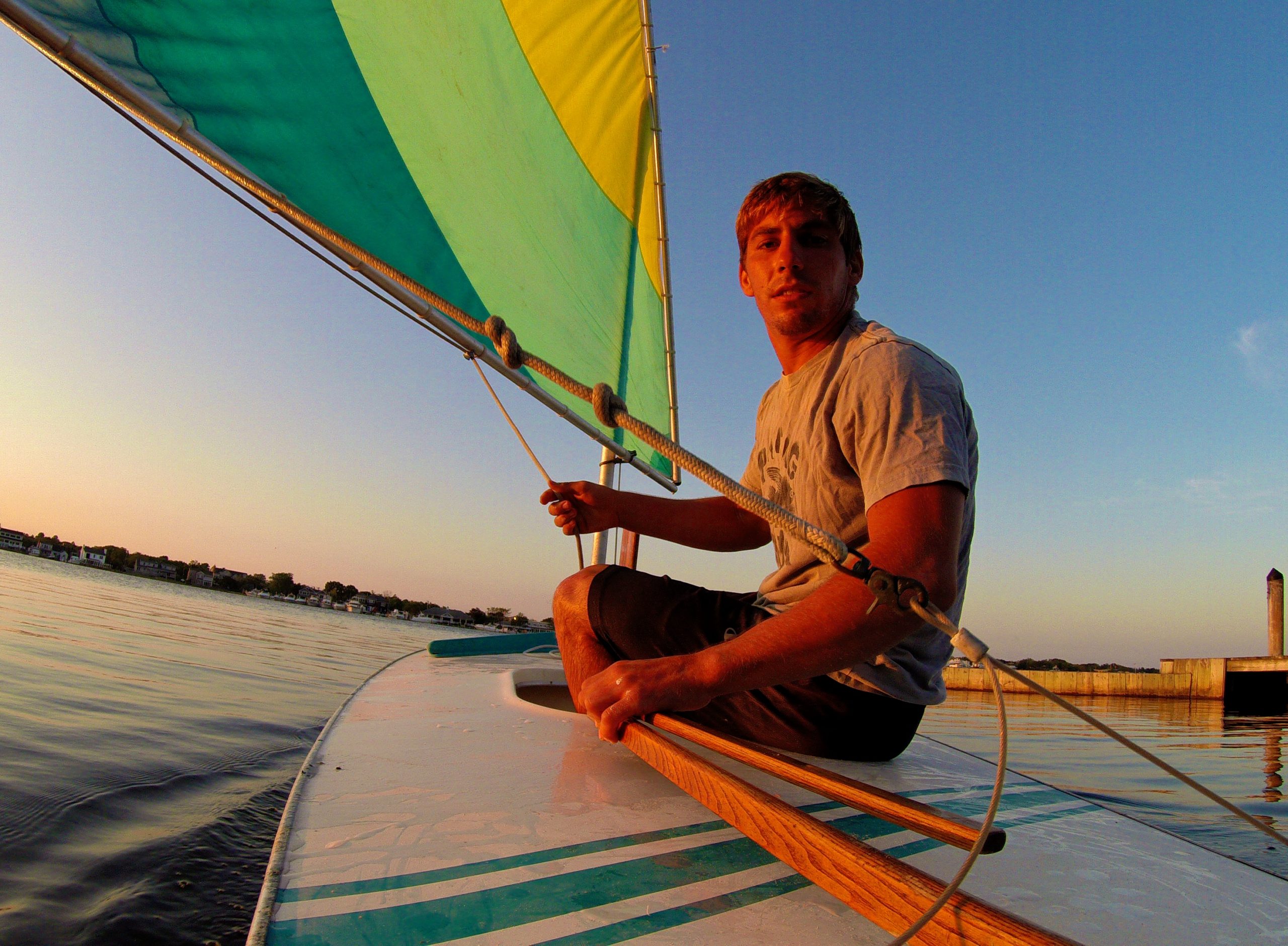Whether you are cruising on a sailboat, trawler, or yacht at some point you will more than likely have to hail the bridge tender to open a bridge. It is important to be educated on the proper protocol of hailing a bridge so you are not caught off guard when you arrive at a bridge you cannot fit under. This article will explain the proper protocol on how to open bridges on the ICW.
Opening bridges 101
First things first, it is important to know how much vertical clearance you need. There is often a tide board on or near the fenders of the bridge that reads the bridge’s current vertical clearance. You can also refer to Offshore Blue’s Atlantic Intracoastal Waterway Guide for a quick reference of bridge names, charted vertical clearances, schedules, restrictions, and the VHF hailing station for each bridge (usually 9 or 13). Adrenaline is 56′ from the waterline to the top of her mast, so if the charted vertical clearance is anywhere under 57′ we know we must open the bridge.

Offshore Blue’s ICW waterway guide
In some areas, multiple bridges can be in the same VHF range. It is very important to determine the proper name of the bridge. This can be found on a plaque on the bridge, your charts, or by following Offshore Blue’s Waterway guide.

Identifying bridge name, schedule, and VHF channel
Now that you know the name of the bridge and that your vessel is too tall to fit under, it is time to call the bridge tender (I usually call when we are about a mile away).
But how?
Bridges are typically monitored by VHF (we use a Standard Horizon Marine Handheld). In Florida channel 9 is mostly used for bridge hailings but refer to the Atlantic ICW Guide mentioned above to confirm. Turn your VHF to the correct channel and be as clear and concise as possible. You want to state the name of the bridge, tell the tender who you are and the direction you are going. He or she will then acknowledge you and you may either ask for an opening (some bridges are on demand) or you can let the tender know you are standing by for his next scheduled opening. It is important to wait for the bridge spans to be completely open before you start making your way through. Once through you can let the tender know you are all clear and say thank you:)
Here is an example:
Indiantown Bridge, Indiantown Bridge. This is Northbound sailing vessel Adrenaline.
Indiantown bridge, Go Captain.
We are standing by for your next opening.
Next opening is at 12:15. You have about 8 minutes.
Copy standing by on 09.
.
.
.
Adrenaline is all clear. Thank you for the opening.
Have a nice day captain.

Opening bridges on the ICW
Here are a few more tips for proper bridge protocol:
** It is against the law to make a bridge open unnecessarily and you could face a pretty hefty fine for doing so. If moveable structures are preventing you from clearing a bridge these structures must be taken down. For example, outriggers and antennas must be lowered rather than hailing for a bridge to open for you.
** If the tender does not acknowledge your hail, try again. It is their duty to answer. If you are still having trouble reaching them you can usually find a phone number for any particular bridge online. There is also a sound signal that can be used to call a bridge. This signal is one prolonged blast followed within three seconds with one short blast. The bridge tender will acknowledge you by repeating the signal. If he responds with five short blasts there is a problem and you may not proceed.
**If there happen to be multiple people waiting for the same bridge, proceed one at a time. If there is traffic going in both directions the vessels that have the current going with them have the right of way. If a vessel somehow is restricted in movement, they may ask the other vessels for priority when opening. Make sure to communicate with each other.
** If you approach a bridge after other boats have requested an opening and the spans have begun to rise, then wait for the spans to completely open before calling the tender. After they open you may ask if you may sneak in on the opening. Tenders are not allowed to talk while operating the spans.
** Open bridges cause extreme traffic jams and can cause problems for emergency vehicles. Make sure you are at an opening on time and make your pass as quickly as possible (without leaving a wake of course).
I hope this helps on your next trip on the ICW.
Thanks for reading:)
Sierra





Sierra
That was a most informative explanation of how to open a bridge that I have ever read.
Thanks very much.
Love you guys videos.
Pete Lindstrom
Thanks for reading Pete:)
Nice work Sierra! You should be writing training Manual for a book!
Thank you for reading 🙂
Nice article.
Thank you 🙂
I also want to compliment you on your article, which I just read while on duty in a Central Florida bridge house. I can add a few things.
(1) Marine radio transmissions can be hard to understand anyway, but it so happens I am sitting just a few feet from highway traffic. If a vessel hails me only once and an 18-wheeler is passing within 10 feet of where I am sitting, I may not hear. For the same reason I may ask for vessel identification again. I keep detailed logs to let the U.S. Coast Guard and Florida DOT monitor how two kinds of traffic are moving. The log also might help locate a vessel that reports being in distress after going through my bridge because I can report the direction of travel and time of passage.
(2) My bridge opens only on demand, but it still may not be possible for me to open immediately. Sometimes cars or trucks keep crossing, or pedestrians are on the bridge. Maintenance workers might be in the bowels of the bridge. And, yes, even bridge tenders answer the call of nature!
(3) You mention the need for vessels to wait until the bridge is fully open and that is extremely important. If the bridge malfunctions I may have to abort. If a pedestrian or bicycle rider comes under my traffic gates I may have to stop what I’m doing. Safety comes first.
(4) Whether you are on a waterway or the roadway, please be as patient as you can stand to be. People tend to think we just sit here and push a button, but that is not the case. Every bridge is different, but on my bridge 12 steps have to be completed in precise order to open, and 9 are required to close. My consolation is that boaters can only say ugly things to me on the radio, whereas drivers have been known to throw beer bottles at us!